
This post may contain links from our sponsors and affiliates, and Flywheel Publishing may receive
compensation for actions taken through them.
Women all over the world have a longer life expectancy than men, according to the World Health Organization. It’s no different in the United States, where the average life expectancy at birth for women is 81.1 years compared with 76.1 years for men.
One reason for the difference is that women are generally more mindful about their health than men, are more likely to see a doctor, and are more forthcoming about problematic symptoms. Lifestyle choices and personal health care may be a factor as well. Women in general tend to take better care of themselves. They make a doctor’s appointment even if their symptoms are vague. Also, men are significantly more likely to drink heavily and they tend to smoke more.
Women need to consider issues related to fertility and their reproductive systems. Hormone levels change as women age, adding to potential health concerns. In addition to health challenges unique to women, some chronic diseases, such as migraine headaches and thyroid problems, that can affect both sexes impact women more. Here are 50 health tips every woman should know.
24/7 Tempo has compiled a list of examinations every woman should have and when, using sources such as the Centers for Disease Control and Prevention, National Institutes of Health, the National Cancer Institute, and the U.S. Preventive Services Task Force.
Click here to see the medical tests every woman should have and when
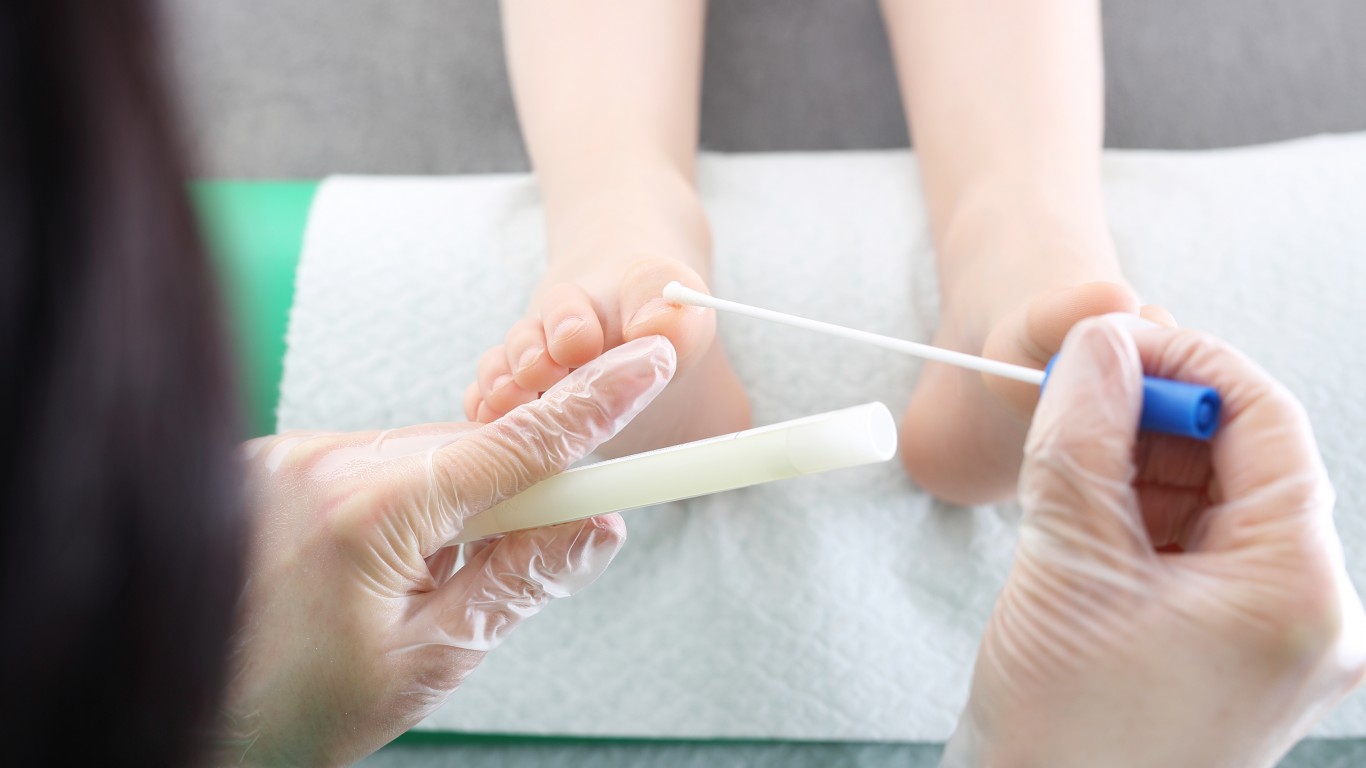
1. Pap smear
> When to get tested: Every three years between 21 and 65
A pap smear, also known as a pap test, is a screening for detecting cervical cancer in women. For women ages 21 to 65, doctors generally recommend repeating this test every three years, except in some cases where the recommendation changes to more or less frequently. Before the test was introduced, cervical cancer was a leading cause of cancer deaths among women in the country. Today, it’s not even among the 10 biggest cancer killers among women.
Cervical cancer is most frequently diagnosed in women between 35 and 44 years of age. The American Cancer Society estimates that in 2020 nearly 14,000 new cases will be diagnosed and about 4,300 women will die from the disease.
[in-text-ad]
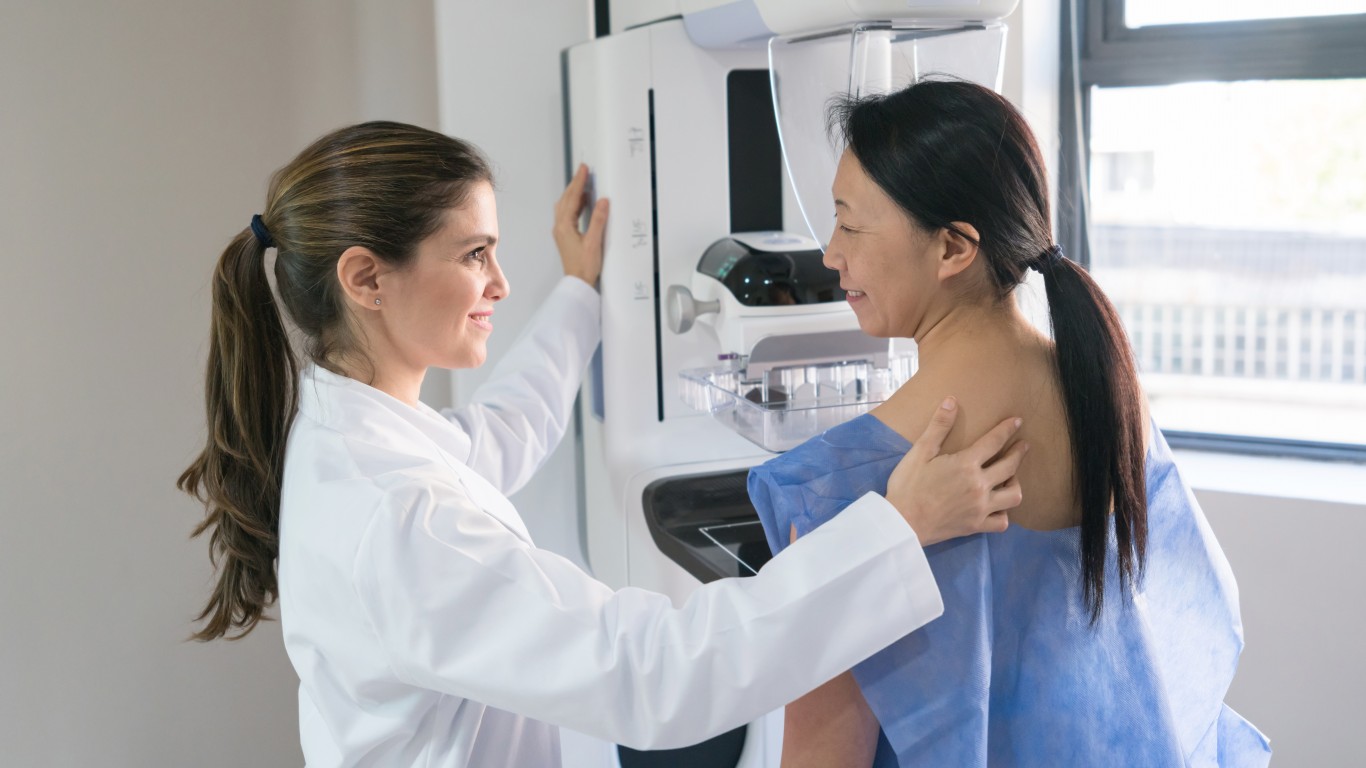
2. Mammogram
> When to get tested: Every two years after 50
A mammogram is a low-dose x-ray picture of the breasts that is used to test and diagnose breast cancer, the most common cancer in women in the U.S. The U.S. Preventive Services Task Force recommends that women between 50 and 74 get a mammogram every two years, but recommendations may also vary depending on the woman and her risk factors. Women between 40 and 49 should talk to their doctor if they want to start screening.
The American Cancer Society estimates that in 2020 nearly 277,000 women will be diagnosed with invasive breast cancer, another 48,530 with carcinoma in situ (CIS is a non-invasive and the earliest form of breast cancer), and that more than 42,000 women will die from the disease.

3. STDs and STIs
> When to get tested: Once a year
STD rates are, which are at record high levels, according to the CDC, are higher among women than in men. Women are biologically more likely to catch an STD as they are more easily transmitted from the man to the woman than from the woman to the man.
The CDC estimates that nearly 20 million new sexually transmitted infections (STIs) occur every year, half of those among young people aged 15-24, with one in four sexually active adolescent girls having an STD.
If left untreated, STIs such as chlamydia and gonorrhea — which often show no symptoms — can damage the fallopian tubes, uterus, and surrounding tissues, possibly leading to infertility. Chlamydia and gonorrhea are two of the leading preventable causes of infertility and ectopic pregnancies in the world.

4. Hepatitis C
> When to get tested: During each pregnancy and if born between 1945 and 1965
Hepatitis C is a viral infection that damages the liver. It spreads through contaminated blood, including from sharing needles. A baby can get infected during birth if the mother has hepatitis C. More than 3 million people in the country have hepatitis C, but most don’t have any symptoms and don’t know they are infected. About 17,000 new cases are diagnosed every year. If left untreated, the infection may lead to cirrhosis, liver cancer, or death.
The CDC recommends hepatitis C screening, which consists of a simple blood test, at least once for all adults and for all people who have HIV or have undergone certain medical procedures. For pregnant women, the recommendation is during each pregnancy. Everyone born between 1945 and 1965 — the baby boomers — should get tested for hepatitis C. More than 75% of Americans living with the condition are baby boomers, according to the American Liver Foundation.
[in-text-ad-2]

5. Bone density test
> When to get tested: After menopause or after 65
A bone density test helps determine if a person has osteoporosis, a condition in which the bones become weak and brittle, increasing the risk of major bone fractures even after a minor fall. Most people don’t even know they have osteoporosis until a fracture occurs because the disease progresses slowly without symptoms. Women develop osteoporosis earlier in life and it progresses faster in women because they have less bone mass.
The National Osteoporosis Foundation recommends that postmenopausal women, those over the age of 65, and women over the age of 50 who have risk factors get a bone density test, an X-ray that measures how much calcium and other minerals are in the bones. Risk factors include certain medications, thyroid problems, excessive drinking, smoking, having stomach or intestine diseases, and prolonged bed rest.

6. Pelvic exam
> When to get tested: Every year
A pelvic exam involves a visual and physical check of a woman’s reproductive organs and is performed before, during, and after menopause. A pelvic exam is also performed to detect any possible signs of ovarian cysts, sexually transmitted infections, or uterine fibroids, which are noncancerous growths of the uterus.
The exam is crucial to women because the risk of ovarian cancer increases as they grow older. Ovarian cancer is the fifth leading cause of all cancer deaths among women in the U.S., according to the American Cancer Society. The organization estimates that about 22,000 women will be diagnosed with ovarian cancer in 2020, and nearly 14,000 will die from it.
[in-text-ad]

7. Breast self-exam
> When to get tested: Early 20s
In recent years, studies have shown a weak connection between self-examination and detecting breast cancer. Self-examination, therefore, is no longer recommended as part of formal screening for breast cancer. However, self-screening still has a purpose. It’s important for women to know how their breasts usually look and feel, so they are more likely to notice changes early on.
The death rates from breast cancer among women are higher than for any other cancer, except lung cancer, according to the American Cancer Society.
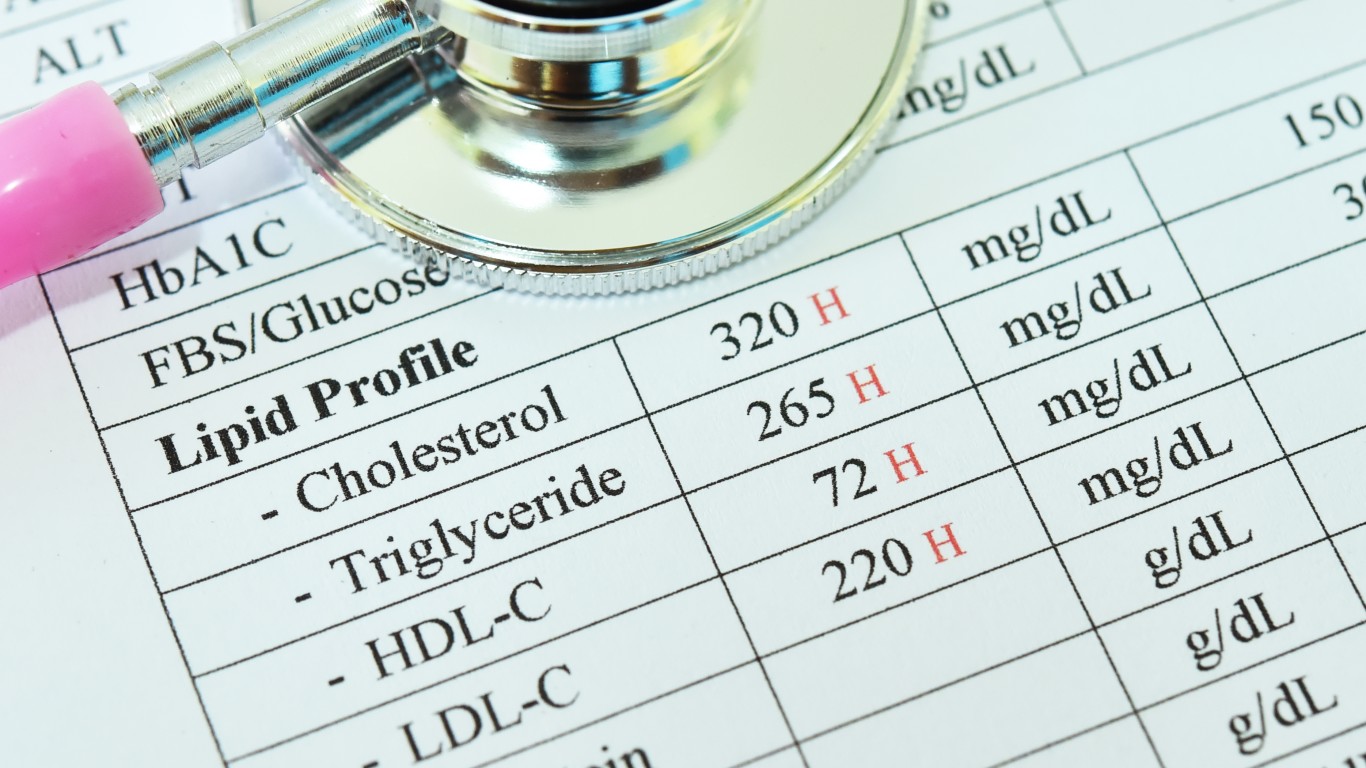
8. Lipid panel test
> When to get tested: At 45, or sooner if you are at risk for heart disease
A lipid panel measures fats and fatty substances, including triglycerides, high-density lipoprotein (HDL) “good” cholesterol, and low-density lipoprotein (LDL) “bad” cholesterol. Lipid disorders such as high cholesterol, which has no symptoms, increase the risk for coronary artery disease, heart attack, or stroke, all of which can be fatal.
The American Heart Association recommends that everyone over the age of 20 should have their cholesterol checked every four to six years. More frequent testing may be needed for people who are at higher risk for developing heart disease, including those who are overweight, have diabetes, smoke, and are physically inactive. Women between 55 and 65 should take a lipid test, which is a blood test, at least every two years as their LDL cholesterol levels tend to rise after menopause.

9. Vitamin D deficiency
> When to get tested: Women at risk for deficiency
Vitamin D levels are checked with a simple blood test that can be part of a routine medical exam. People need the “sunshine vitamin” â the body produces vitamin D when the sun’s ultraviolet rays come in contact with the skin — to absorb calcium and sustain strong bones. Vitamin D deficiency has been linked to several cancers, heart disease, depression, muscle pain, diabetes, and infections.
People with dark skin are at higher risk of vitamin D deficiency as the darker the skin needs to absorb more sun to produce enough vitamin D than lighter skin. People with Crohn’s disease or celiac disease are at higher risk, too. They can prevent the body from absorbing vitamin D by interfering with how fat is processed.
[in-text-ad-2]
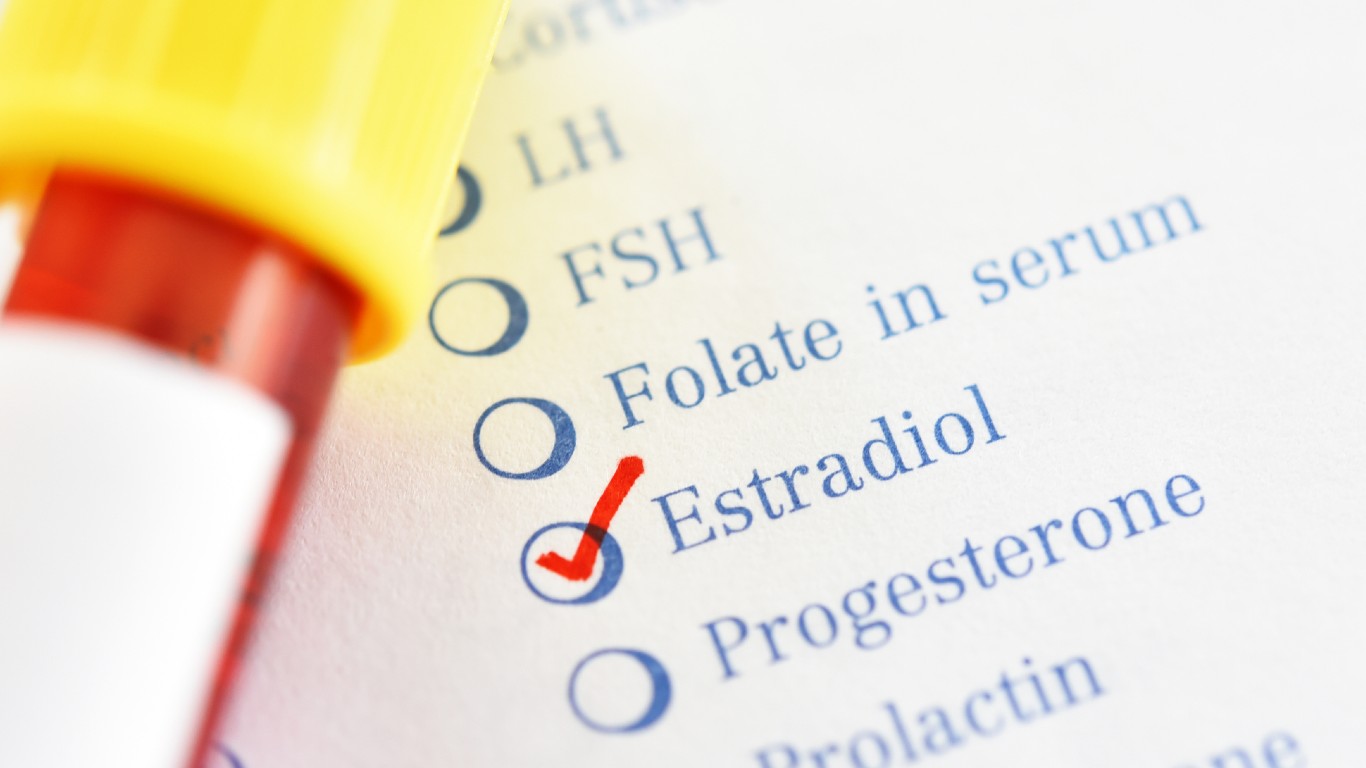
10. Estrogen levels
> When to get tested: If having trouble getting pregnant
Estrogen tests, which measure the level of the estrogen — the primary female sex hormone — in the blood or urine, help doctors detect fetal birth defects, diagnose menstrual problems, and check for tumors of the ovaries, particularly in young girls and older women. Estrogen level screenings are also used to monitor fertility treatments.
An estrogen test is recommended for women who are having trouble getting pregnant, who are missing or having abnormal periods, or who are experiencing menopause symptoms.

11. Diabetes
> When to get tested: 45 and over every three years
About 10.5% of the U.S. population has diabetes — that’s more than 34 million Americans, according to the American Diabetes Association. Another 7.3 million don’t know they have the condition, which if left uncontrolled can lead to blindness, kidney failure, limb amputation, and cardiovascular disease. One in three adults have prediabetes, and most are not aware or have never been told they have the condition. Just over 9% of women 18 and over had diabetes as of 2018, up from 8.5% the year before, according to data from the CDC.
There are several blood sugar tests that can confirm a diabetes diagnosis. The standard test for the illness is the glycated hemoglobin (A1C) test, which measures the average blood sugar levels over a period of two to three months. Screening is recommended at three-year intervals beginning at age 45, unless a person is at higher risk for diabetes because they are overweight, have a family history of the condition, or do not exercise.
[in-text-ad]
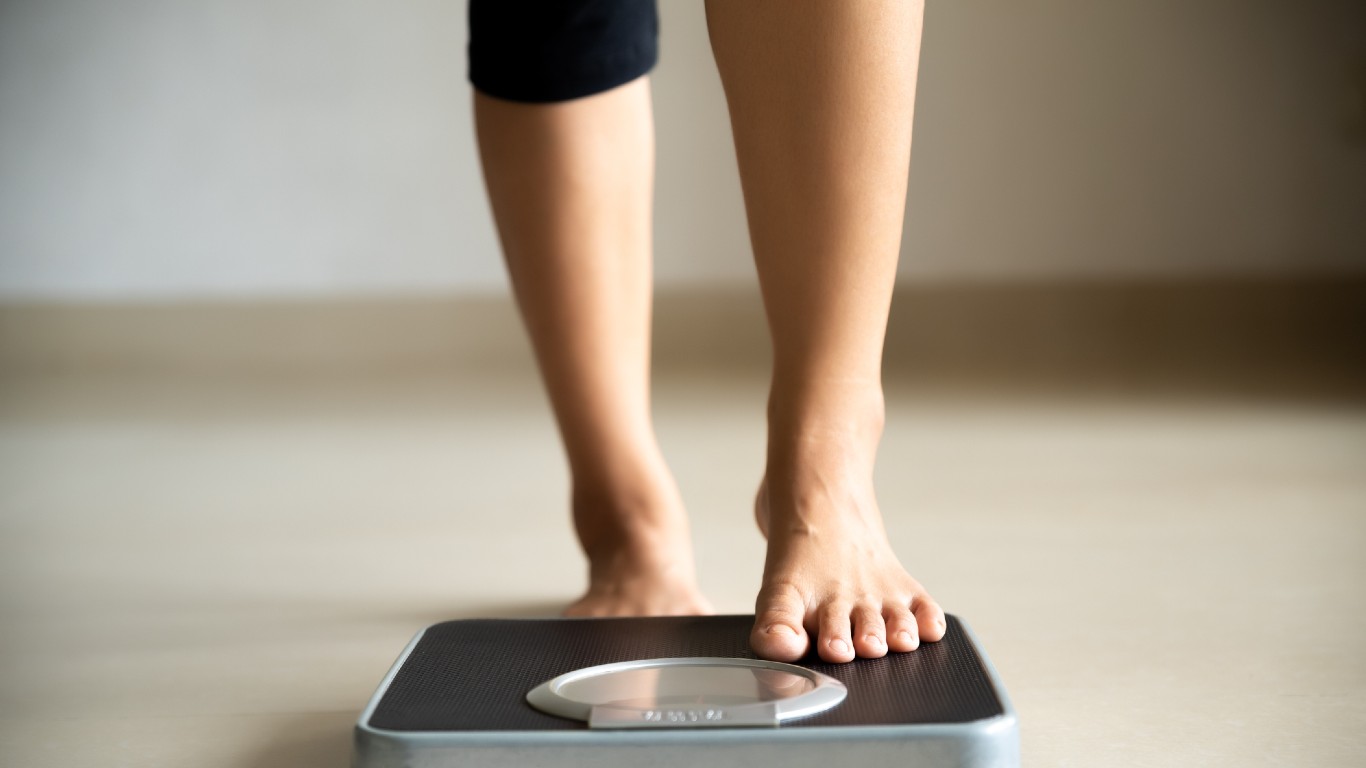
12. Body fat percentage
> When to get tested: Every few months
Body mass index (BMI), which is a measure of body fat based on height and weight, is the standard doctors use to diagnose obesity or if a person is overweight. BMI, however, has limitations. It does not take into account how much of the weight is actually fat. Too much body fat can increase the risk of health issues such as high cholesterol, heart disease, and even depression. Excessive abdominal fat may increase the risk of type 2 diabetes, hypertension, and coronary artery disease.
Women tend to store more fat than men. By 25 years of age, for example, women with normal weight have nearly twice the body of men with normal weight. There are various reasons for this difference, including female hormones. Estrogen alone reduces a woman’s ability to burn energy after eating.
A more comprehensive body fat calculator takes into account age, gender, weight, height, as well as skinfold measurements of the thighs, triceps, and suprailium (above the upper bone of the hip). The healthy range for women is between 10% and 31%, depending on age, level of physical activity, among other factors.
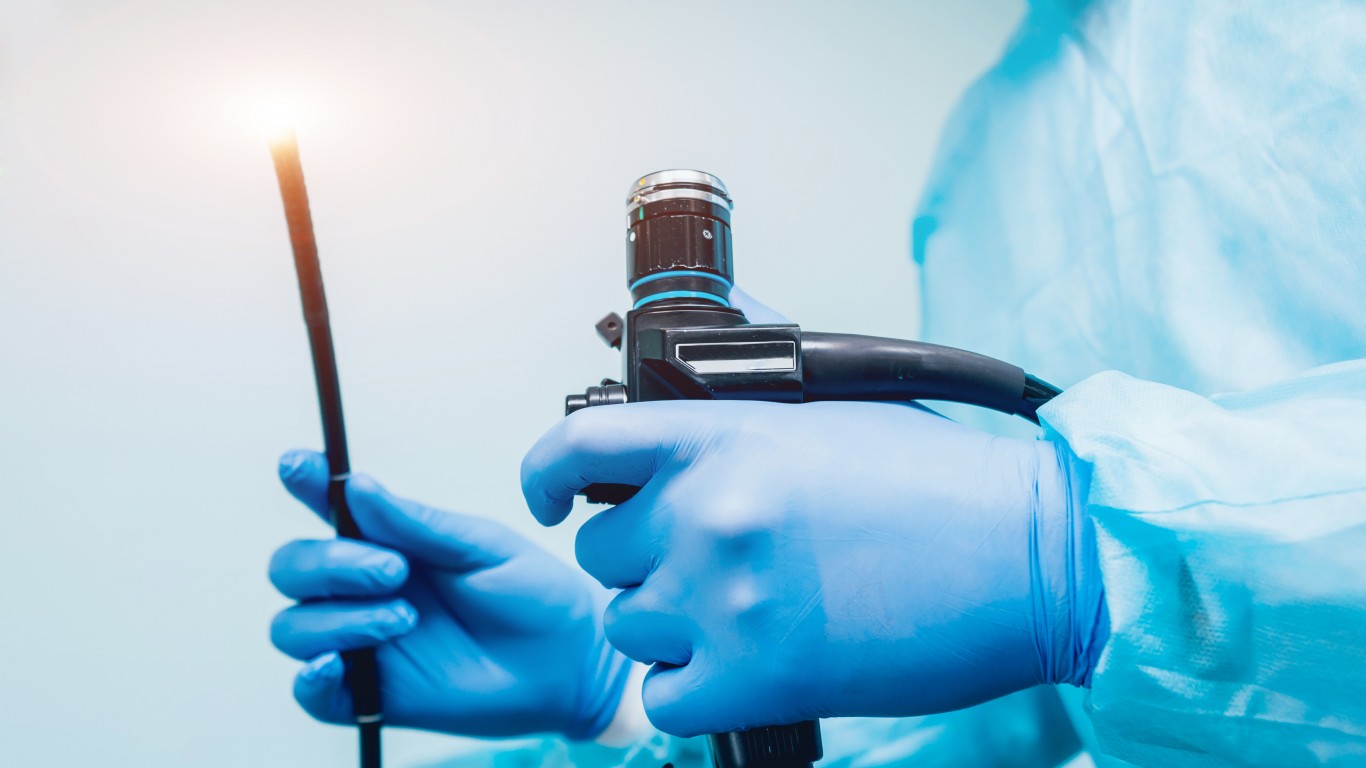
13. Colonoscopy
> When to get tested: Between 50 and 75, or after 45 if at risk
One of the most common ways to screen for colorectal cancer, the second leading cancer killer in the country among both men and women, is a colonoscopy. The U.S. Preventive Services Task Force recommends that adults ages 50 to 75 be screened for colorectal cancer. It is recommended that people who do not have an increased risk of colorectal cancer have the test every 10 years.
One in 25 women will develop colorectal cancer in their lifetime, according to the American Cancer Society. Between 2012 and 2016, there were a total of 335,600 new cases and 123,282 deaths among women in the United States.
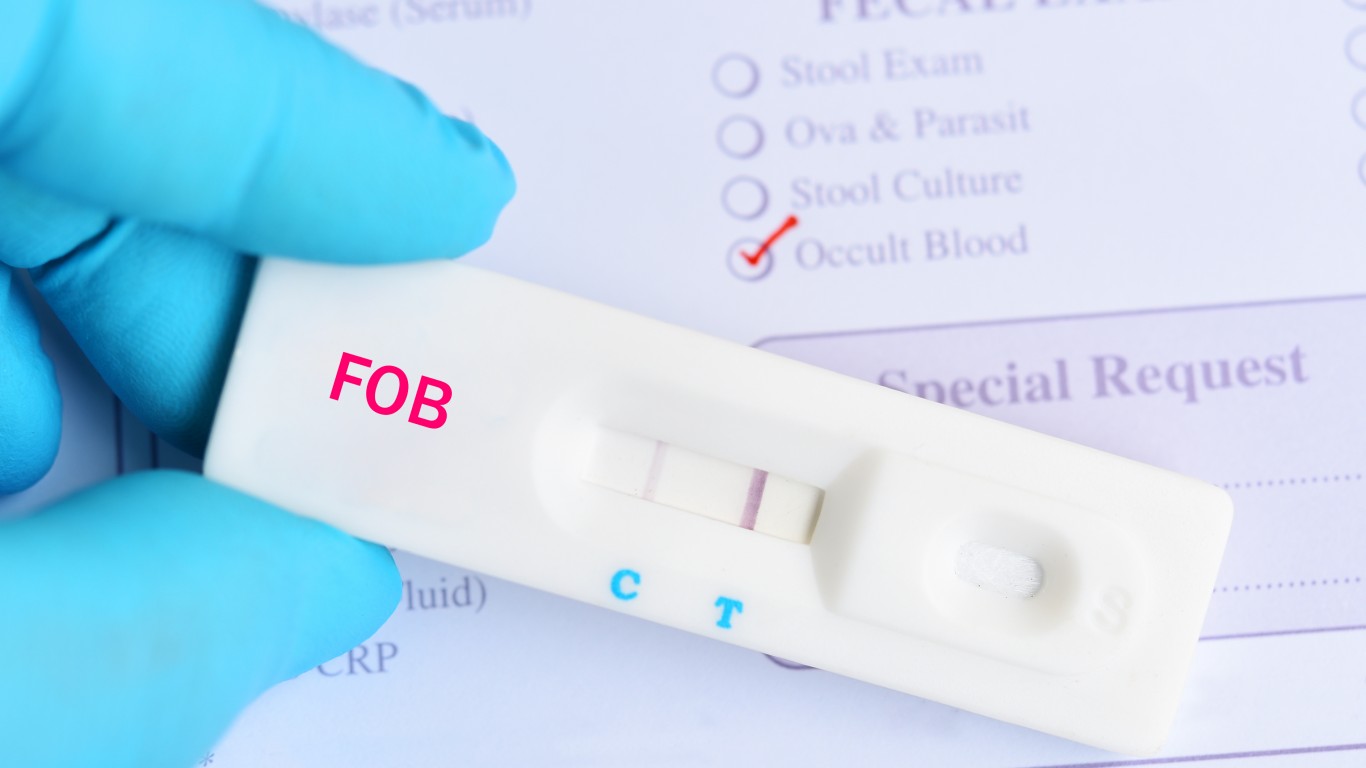
14. Fecal occult blood test
> When to get tested: After 50
The yearly stool test is one of the tests to screen for colorectal cancer. The test, also called the guaiac-based fecal occult blood test (FOBT), uses the chemical guaiac to detect blood in the stool. The test is sometimes used to detect colorectal cancer at early stages. The test may also indicate ulcers or inflammatory bowel disease.
The National Cancer Institute recommends that people get regular screenings for colorectal cancer starting at age 50. If the FOBT test is positive, a doctor may recommend a colonoscopy. A FOBT is recommended every year, while a stool DNA test, which checks for blood and genetic changes that may be signs of cancer, should be repeated every three years.
[in-text-ad-2]
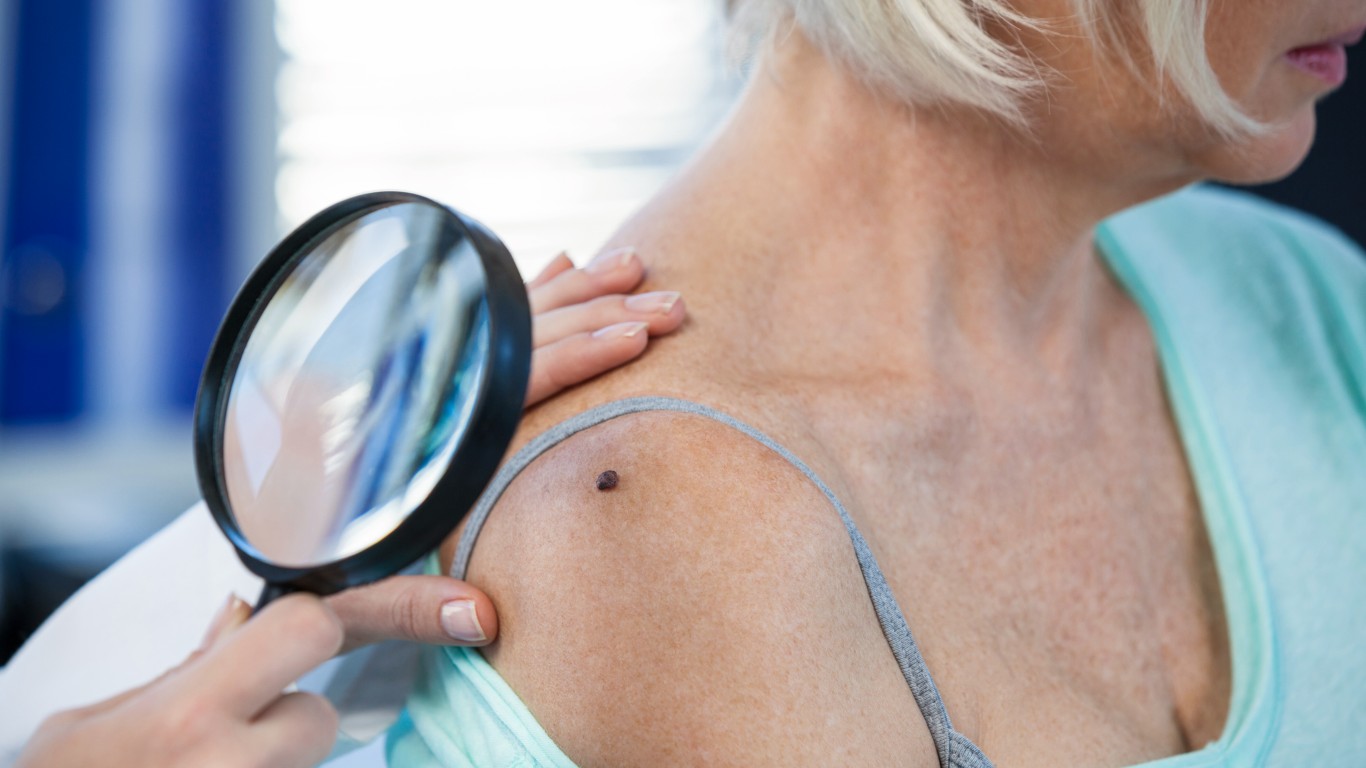
15. Skin cancer
> When to get tested: Once a year after 35
Skin cancer is the most common type of cancer in the U.S., according to the American Cancer Society. More than two people die of skin cancer in the country every hour, according to the Skin Cancer Foundation.
The American Academy of Dermatology recommends that people get a full skin exam once a year in order to check for signs of skin cancer. The exam, which should be conducted by a dermatologist, looks for unusual or suspicious moles or markings on the skin.
Nearly 78,000 new cases of melanoma were diagnosed in the U.S. every year between 2012 and 2016, according to the CDC. About 32,000 of each year’s new skin cancer cases were in women. Skin cancer risk factors include fair skin, sunburns, exposure to radiation, and living in high-altitude climates where the sunlight is stronger.
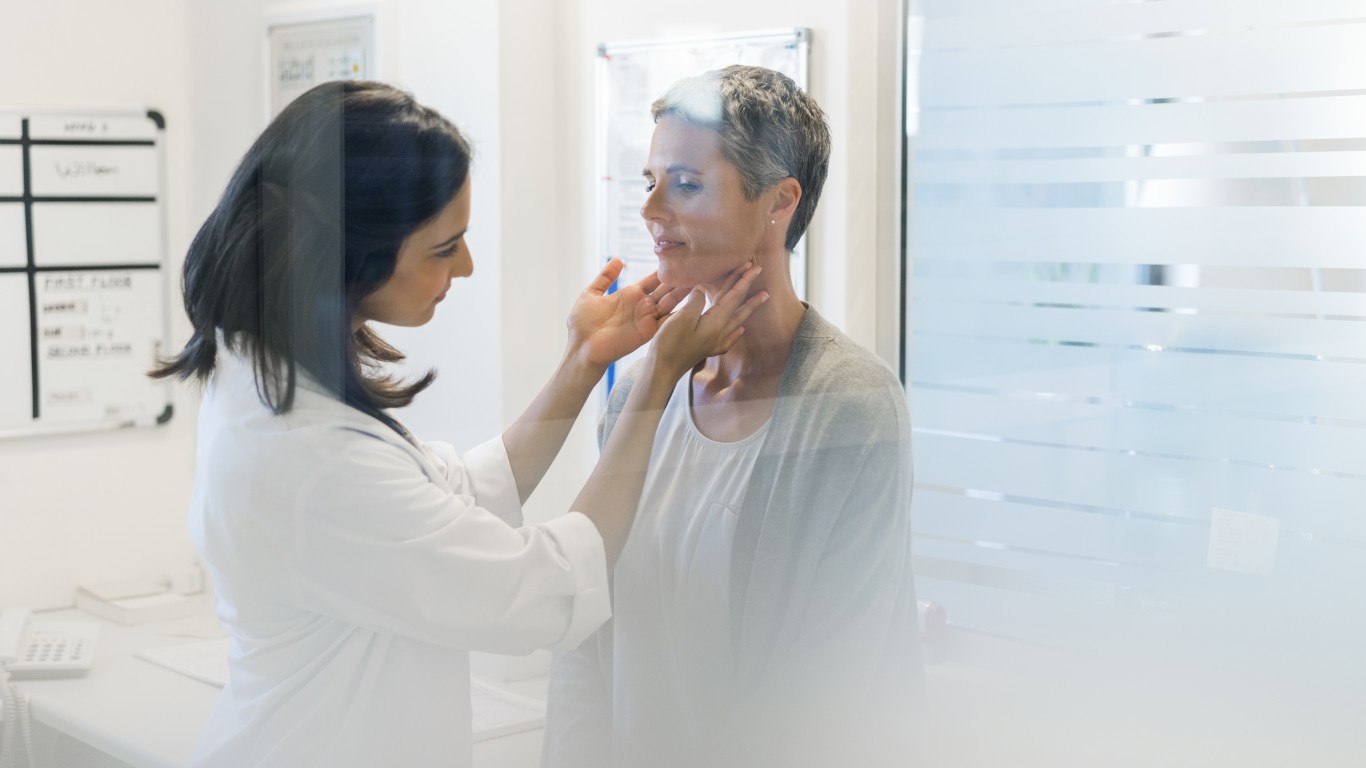
16. Thyroid
> When to get tested: Every five years after 35
Thyroid problems, which are screened for with a blood test, are caused by either too many or too few thyroid hormones produced by the butterfly-shaped gland at the base of the neck. The thyroid plays a role in many vital body functions such as heart rate and metabolism, and it helps regulate mood, muscle strength, body weight, energy levels, and cholesterol, to name a few.
One in eight women will have a dysfunctional thyroid during her life, which can cause menstrual problems, difficulty getting pregnant, as well as health problems once a woman is pregnant. Women who have gone through radiotherapy or have anemia or type 1 diabetes are at a higher risk for thyroid disease.
More women than men have thyroid disease, including thyroid cancer, which can be detected with a biopsy or imaging tests, including an MRI, an ultrasound, a radioiodine scan, or a chest X-ray. About 35,000 women are diagnosed with thyroid cancer a year, and 1,100 women die from the disease.
[in-text-ad]

17. Lung cancer
> When to get tested: Between 55 and 74
Lung cancer is the deadliest cancer among both men and women in the United States. It’s difficult to detect in early stages. Partially as a result, more than half of the patients die within a year of being diagnosed. Though in general more men than women are diagnosed with lung cancer each year, young women between 30 and 49 have higher rates of lung cancer than men at the same age group, according to a recent study published in the International Journal of Cancer.
A low-dose computed tomography (a low-dose CT scan, or LDCT) is the only lung cancer screening test recommended by the CDC. Asymptomatic people with a history of smoking and people who are between 55 and 80 should be screened every year, according to the U.S. Preventive Services Task Force.

18. Depression
> When to get tested: If symptoms last more than 2 weeks
Women are almost twice as likely as men to be diagnosed with clinical depression, according to data from the National Center for Health Statistics. One in eight women will experience depression at least once in her lifetime. Postpartum depression, which is depression in women after they have given birth, is common. Between 10% and 15% of new mothers are diagnosed with it, and between 30% and 70% of them feel symptoms for a year or more, according to the Anxiety and Depression Association of America.
Depression screening typically involves questionnaires, such as the Patient Health Questionnaire, the Hospital Anxiety and Depression Scale for medical patients, or the Geriatric Depression Scale in older adults. The new guidelines by the U.S. Preventive Services Task Force recommends that all people age 18 and older be screened for depression.

19. Follicle-stimulating hormone test
> When to get tested: If having trouble getting pregnant
The follicle-stimulating hormone (FSH) test is a simple blood test used to find any possible causes for certain reproductive system symptoms. The follicle-stimulating hormone is responsible for the growth of ovarian follicles that produce estrogen and progesterone in the ovaries and help maintain menstrual cycles. The test measures the level of FSH present in a woman’s blood.
The test is used to assess infertility problems, check for possible reasons for irregular menstrual cycles, and help with diagnosing disorders of the pituitary gland or diseases involving the ovaries. A doctor, therefore, may order a FSH test if a woman has been unable to get pregnant after 12 months of trying, has an irregular menstrual cycle, or if a woman’s periods have stopped.
[in-text-ad-2]

20. High blood pressure
> When to get tested: At least every two years after 18
High blood pressure is a leading cause of cardiovascular disease, which contributes to a third of deaths among women in the U.S., according to the American College of Cardiology. Health organizations released new guidelines in 2017 about normal blood pressure, lowering the hypertension diagnosis level to 130/80 from the previous threshold of 150/80 for people older than 65 and 140/90 for those younger than 65.
High blood pressure is often called “the silent killer” because symptoms don’t show up until vital organs are already damaged.
People can check their blood pressure regularly with home blood pressure monitors. Otherwise, the recommendation is for people with no history of hypertension to get their blood pressure checked at least every two years or every year if their blood pressure is borderline high. Women in menopause may have to check their blood pressure even more often. The condition is linked to a 50% increase in the risk of developing hypertension.
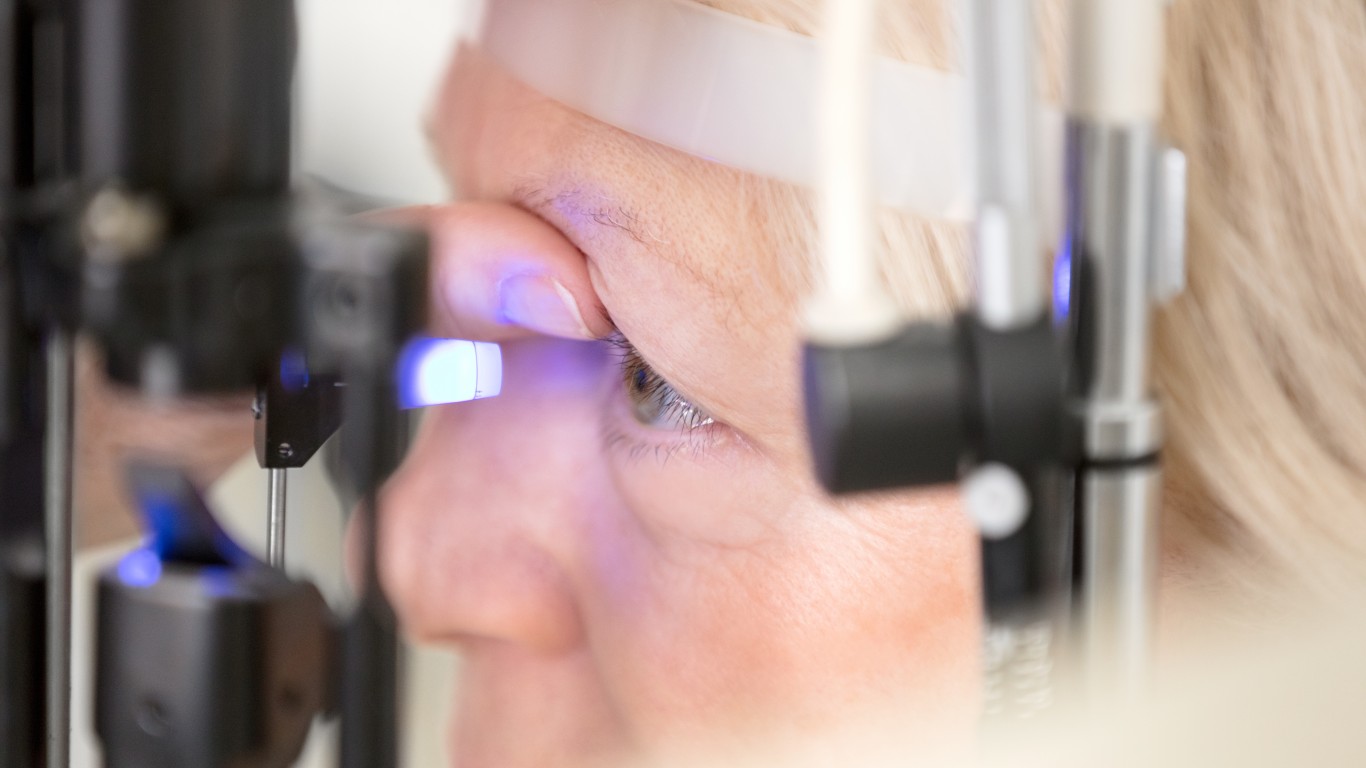
21. Glaucoma
> When to get tested: After 40
There are several types of glaucoma, a condition that affects the nerve connecting the eye to the brain. The most common type of glaucoma is an open-angle glaucoma, which often has no symptoms other than gradual vision loss. Glaucoma, which has no cure, is a leading cause of irreversible blindness in the U.S.
More than 3 million Americans are living with glaucoma, but half of them don’t even know it, according to the Glaucoma Research Foundation. Some research has shown that older women are at a higher risk of glaucoma and glaucoma blindness than men.
The American Academy of Ophthalmology recommends an eye disease screening for everyone over the age of 40. People at higher risk — such as diabetics, those with high blood pressure, and people with family history of glaucoma — should start testing earlier.
[in-text-ad]
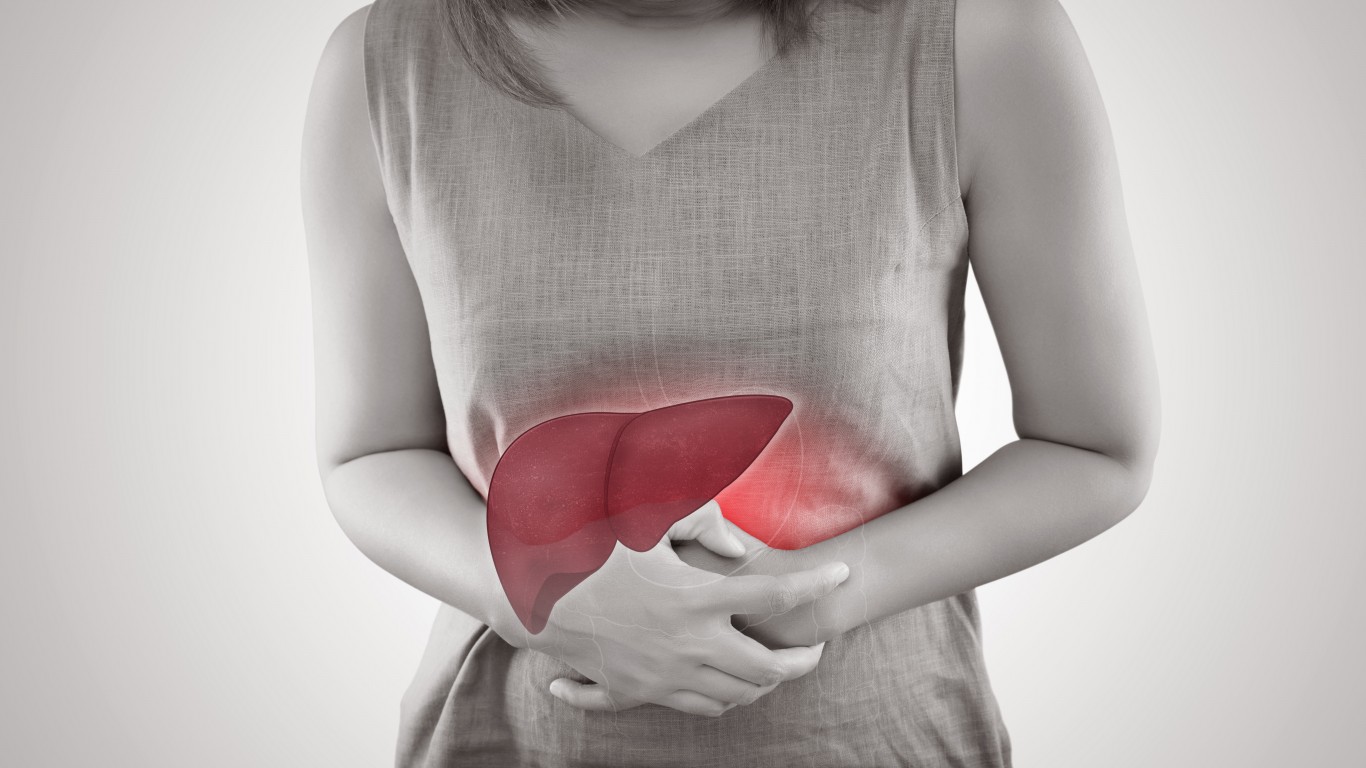
22. Hepatitis B
> When to get tested: During each pregnancy
There is a hepatitis B vaccine, but for those who are not vaccinated, the CDC recommends regular screening for certain groups of people, including those who inject drugs and who have HIV.
In addition to testing based on risky behaviors, hepatitis B screening is recommended for all pregnant women because babies born to women with hepatitis B who are not treated at birth are at significant risk of developing chronic hepatitis B, which is an illness that occurs when the virus remains in a person’s body.
About 1.2 million people in the country have hepatitis B and most are unaware that they have the infection. Every year, about 3,000 people in the U.S. die from hepatitis B-related liver disease.
Get Ready To Retire (Sponsored)
Start by taking a quick retirement quiz from SmartAsset that will match you with up to 3 financial advisors that serve your area and beyond in 5 minutes, or less.
Each advisor has been vetted by SmartAsset and is held to a fiduciary standard to act in your best interests.
Here’s how it works:
1. Answer SmartAsset advisor match quiz
2. Review your pre-screened matches at your leisure. Check out the advisors’ profiles.
3. Speak with advisors at no cost to you. Have an introductory call on the phone or introduction in person and choose whom to work with in the future
Get started right here.
Thank you for reading! Have some feedback for us?
Contact the 24/7 Wall St. editorial team.
 24/7 Wall St.
24/7 Wall St. 24/7 Wall St.
24/7 Wall St. 24/7 Wall St.
24/7 Wall St.
